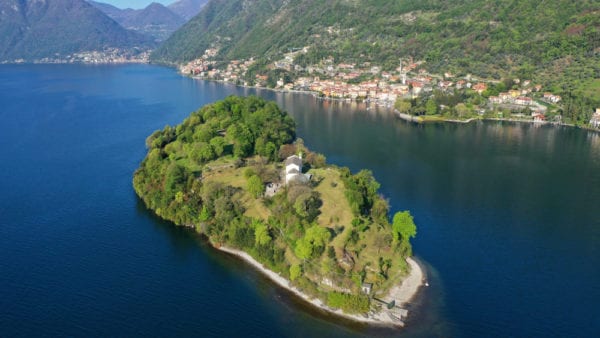A trip to Comacina Island, Lake Como
A trip to Comacina Island, Lake Como
A trip to Comacina Island, Lake Como
-
Hannah
-
Hannah

It was a delight to set my book in this area of Italy, because the scenery is so spectacular and the atmosphere so calming; when I visited I just knew this was a place to inspire romance. Here’s a glimpse of Tremezzina, on the western bank of the lake, as seen from the water in Concerto:
The landscape had a breathless, majestic beauty. Apart from being fruitful and fertile, the district was so lush, the colours so vivid, that an artist could never paint anything so serene and lovely, Catriona remarked to Umberto.
‘It is the Garden of Lombardy,’ he told her.
There around the smiling bay, olive groves and green laurels, delightful gardens and orderly vineyards, the myriad of splendid villas, patrician houses and magnificent palazzi glittered in the sunshine, like jewels planted in the dazzling countryside. … The yacht drifted slowly along the stretch of clear, limpid lakeshore by Renaissance-styled villas buried behind hedges of roses or smothered among magnolias and oleanders, trees of verbena and heliotrope, groves of myrtle and golden orange.
In this scene, Umberto is taking Catriona on a trip aboard his yacht – named Concerto – to visit Isola Comacina, Comacina Island.
At a glance, one may think the wooded island – the only one on the lake – was too small to be of significance, but in fact over the centuries Comacina Island has been of great importance as a political and religious centre.
In the sixth century, the island was the last Roman stronghold in Lombardy. In charge was the Roman general Francione, and so goes the legend, he had an important reason to protect this land for the empire: the Holy Grail was kept here at the time. After a ten-year siege, Francione was defeated, and the Lombards claimed the island as their own. Then, in 1169, the Holy Roman Emperor Frederick Barbarossa invaded the island. In response the bishop of Como cursed the island, saying, ‘The bells will never ring, the rocks will never be placed one over the other, nobody will do here the work of the publican, the punishment a violent death.’ Barbarossa’s soldiers razed to the ground most of the buildings on the island – homes, fortifications and churches.
Today, the remains of those ancient buildings and those who lived in them make the island an archaeological treasure trove. After Barbarossa, the island fell into decline and was largely abandoned, but in the 1930s the Italian Rationalist architect Pietro Lingeri built three houses there, with the idea of turning Comacina Island into an artists’ retreat. Those houses stand to this day, along with a church and a restaurant, Locanda Dell’Isola Comacina Locanda, which has famously served the same six-course menu since 1947.
Umberto has brought Catriona to the island for the festival of St Giovanni. I explain:
‘The festival has been celebrated every year for three hundred years, on the anniversary of the destruction of the island in the tenth century. There’s a great show of splendid illuminations over the lake, with myriad boats processing along its shores. Next day, a Mass is said among the remaining stones of the Basilica of Santa Eufemia. It’s a very emotional celebration.’
Umberto and Catriona watch the festival from the terrace at the Grand Hotel Ossuccio, a majestic five-star hotel which overlooks the island in Lake Como. I write:
Below them, hundreds of lights were twinkling in boats, abandoned on to the stream of the lake, or on the balconies of the pretty pastel houses along the shoreline…
‘It’s beautiful,’ breathed Catriona wonderingly. ‘It’s like something out of Dante, souls crossing to the other side.’
‘That’s always been my thought too. In fact, the lumaghitt is all about remembering souls who sought salvation on the opposite shore when fire engulfed the island in the twelfth century.’
The festival has its roots further back than Barbarossa’s occupation of the island, however. Umberto explains that long before, local people travelled to the church of San Giovanni Batista on the island to implore the saint to rid them of some particularly violent June hailstorms that were destroying their harvest. He granted them a miracle. The storms ceased, and every year thereafter the pilgrimage to the church continued.
Comacina, then, is a spiritual place – a place where one can find solace and meaning. As Umberto tells Catriona:
‘It is said that at sunset and sunrise some lucky people have seen angels’ robes and wings whirling in the sky. If you believe in an unseen world then legend has it that things that are invariably dim and obscure are made clear to human eyes here.’
If you would like to learn more about Comacina Island, these websites contain fascinating articles on its history, along with galleries of photographs of the island and its ruins: http://www.isola-comacina.it/en/ and http://www.comacina.it/en/.